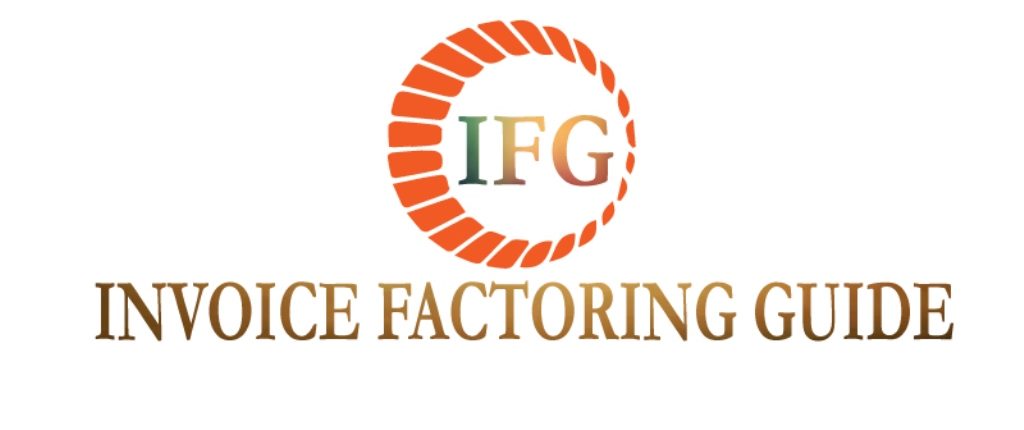Who’ll Survive Fintech’s Battle Royale- Lendio, Fundera or Biz2Credit?
/in Uncategorized/by factoring Lendio vs. Fundera and Biz2Credit
Lendio vs. Fundera and Biz2Credit
It’s been a while since we posted our scores for these fintechs (see our Lendio reviews, Fundera reviews and Biz2Credit reviews). For 2019, we checked in on them to see how they’re doing and look at their similarities and differences.
Lendio Spotlight
· Headquarters: South Jordan, Utah
· In Business Since: 2011
· Funding time: As soon as 24 hours after approval.
· Primary Financing Methods: Term Loans, Lines of Credit, SBA Loans
Lendio is an online marketplace where potential business borrowers come to shop for loans. Lendio acts as a middleman, not a direct lender, connecting borrowers and lenders on their platform. According to reports, they’ve helped small businesses receive over $1.4 billion in small business funding.
Lendio provides a wide array of business financing options, including:
· Accounts receivable factoring
· Working Capital Business Loans
· Merchant Cash Advances
· Equipment Financing
· SBA loans
· Startup Loans
· Commercial Mortgages
· Business Acquisition Loans
· Business Auto Loans (through Bank of America)
As you can see, that’s quite a lineup of loan products. To achieve such a broad scope, Lendio has established partnerships with a wide variety of lenders providing everything from peer-to-peer loans and commercial mortgages to asset based lending and receivables factoring.
For factoring, Lendio features two of the largest fintech players in the invoice finance space, Bluevine and Fundbox. Both provide accounts receivable financing for B2B customers that are invoice rich but cash poor.
And if you have mediocre credit, that’s OK. With factoring, it’s not the credit quality of the borrower that matters. Rather, it’s the creditworthiness of the invoiced customers, known as account debtors. As such, some consider them bad credit business loans.
Keep in mind, Bluevine offers actual small business factoring whereas Fundbox extends lines of credit determined as a percentage of the invoices’ face value, age and credit quality. Factoring receivables involves the actual purchase of the invoice from the customer (factoring companies like Riviera Finance is a prime examples). There are also niche trucking factoring companies like OTR Capital and Fleetone that focus on the transportation clientele.
Lendio also features a number of small business cards from major names like Bank of America, Capital One, Amazon lending and American Express. Some of the same names we’ve covered in our business credit cards section such as the Bank America Business Advantage and Delta SkyMiles card. American Express also offers their merchant financing program if your business accepts their credit cards.
Lendio funding partners include:
· Fundbox
· Funding Circle
· PayPal (Swift Capital)
· Internex Capital
· Fundation
· Breakout Capital
· Credibility Capital
· Seek Capital
· Provider Web Capital
· Headway Capital
· Xendoo
· Profit Stars
· Action Capital
· Local banks (for franchisees)
In addition to their online platform, their marketplace moved into the local space via franchising. Lendio began franchising in 2016 and now has over two dozen franchisees. Lendio ranks #288 on Entrepreneur’s ‘best franchises’ list.1
Current Lendio franchise locations include:
· North Carolina (Charlotte, 2019)
· Pennsylvania (Erie)
· Texas (Plano and Frisco)
· Washington (Spokane)
· New England (Vermont, New Hampshire, Maine)
A Lendio franchise may be a great option for veterans, who receive a 10% discount on the franchise fee (roughly a $2100-$3500 value)2. We applaud this program and is why we include it in our loans for veterans section.
Fundera Spotlight
· Headquarters: New York, NY
· In Business Since:3 2013
· Amount funded: Over $1 billion
· Known for: Small business loans, lines of credit.
Fundera is another online lending marketplace. At fundera.com, business borrowers fill out a quick application and discover what type of loan they qualify for and approximate interest rates. The process takes just a few minutes utilizing the site’s digital technology.
What Type of Business Funding does Fundera Arrange?
Fundera’s Lending Options Include:
· Business Loans
· Term Loans
· SBA loans
· Startup loans
· Lines of Credit
· Small business credit cards
· Factoring financing
· Equipment Financing
· Personal loans
Since their founding, Fundera has handled over $1 billion in small business lending. Their bread and butter are small business loans. Luckily for those with less than perfect credit, Fundera actively brokers invoice financing and invoice factoring companies (yes, they are different).
Fundera Partners Include:
· Kabbage
· Bluevine
· Fundbox
· Funding Circle
· PayPal
· Ondeck
· Headway Capital
· QuarterSpot
· Live Oak Bank
· Credibility Capital
· Celtic Bank
· Chase
· Lendistry
· Capital One
· Fundation
Since both Lendio and Fundera match borrowers with several of the same lenders (Kabbage, Ondeck and Paypal, Funding Circle, Bluevine and Fundbox) it makes sense to check out our rankings first. They can be found on our invoice factoring company reviews page or individually at:
Lendio versus Fundera
While they share many similarities, there are some differences. Despite both being online marketplaces, Lendio has a more local footprint, receiving overflow that doesn’t match local bank standards.
As you can see, Fundera has significantly fewer funding partners than Lendio. This isn’t necessarily good or bad. One could argue that less lenders means price competition for the borrower. Conversely, the scale from concentrated capital sources may contain better customer pricing.
Further, Fundera matches borrowers with personal loans for business which Lendio doesn’t, while business auto loans are more utilized by Lendio’s customers.
If you’re somewhat skeptical of online small business loans and need a more local connection you might consider Lendio because of their franchises. Lendio is also headquartered in lending-friendly Utah, so there may be less red tape involved with the funding processes.
Lendio seems to have more clout when it comes to procuring business auto loans so if you’re in the market for a work vehicle, Lendio may be a great option.
However, if you know you’re looking for personal loans for business, Fundera can match you with a lender (be sure and check our review pages first, Discover personal loans reviews, upstart reviews, prosper loan reviews, etc.).
Finally, if you are a relatively new small business, the educational resources on Fundera (guides, calculators, etc.) are fantastic so maybe start your journey there. They offer non-funding information on everything from small business insurance and marketing to credit card processing and software systems.
Biz2Credit Spotlight
· Headquarters: New York City, New York
· In Business Since: 2007
· Amount Funded: Over $2 billion
· Known for: Small business loans, loans for minorities and professional services
The last of the challengers in our online lending marketplace battle is Biz2Credit of New York. One of the earliest fintechs, Biz2Credit began operations back in 2007. Today, the New York City fintech has arranged loans for over 100,000 small businesses, totaling over $2 billion.
Biz 2 Credit Arranges the Following Types of Loans:
· Small Business Loans
· Equipment Financing
· Business Credit Cards
· Merchant Cash Advances
· Lines of Credit
· SBA loans
· Business Acquisition Loans
· Commercial Real Estate Financing
Biz2Credit does offer various loan options including the usual products-unsecured loans, lines of credit, MCAs, business credit cards, etc. Further, they do a thorough job of demonstrating how funding for a wide range of businesses-from gas stations and motels to doctor loans and CPAs, can improve their operations.
Biz2Credit also doesn’t provide personal loans, per say. A bit of semantics, but they do offer financing to professionals (CPAs, dentists, attorneys, etc.) looking to start their own shop. These startup loans are similar to personal loans in that personal credit checks are performed and collateral (or a substantial personal investment) may be required. Some of the loans Biz2Credit mentions are CDC
Further, they do not offer any invoice finance options, which is unfortunate. Many small and seasonal businesses need the bridge financing that AR financing can provide.
Biz2Credit also doesn’t disclose their lending partners on their, in contrast to Lendio and Fundera. They only mention their large network of large and community banks, alternative funders, institutional investors, credit unions, CDFIs, etc.
And by looking through a variety of articles and publications, you can see that Biz2Credit has arrangements with HSBC, Popular Bank and India’s Tata Capital (in addition to significant VC investors)4. Nevertheless, with a total volume of over $2 billion in funding, Biz2Credit must have strong partnership relationships, well beyond HSBC and Banco Popular.
Not listing their lending partners isn’t necessarily a bad thing, but we’d prefer to see who they vet and trust with. This could help prospective borrowers make a decision of which marketplace to utilize. Of course, before signing any lending agreements, there will be appropriate disclosure of the lenders.
Fundera, Biz2Credit and Lendio: Under the Microscope
Main Similarities
· All are online marketplace lenders (essentially brokers) matching borrowers with lenders.
· Each uses financial technology to improve the process.
· Venture capital backed.
· None are direct lenders.
· All rely heavily on SEO to attract prospects.
Main Differences
· Only Lendio has a real local market presence through franchising.
· Biz2Credit does not provide factoring financing.
· Only Fundera extends personal loans.
· Origination fees paid to Biz2Credit for arranged loans.
The Judge’s Decision
As per our reviews, we formerly had Lendio edging out Fundera and Biz2Credit by a nose (92 to 91 and 91 respectively). After further review, we are upgrading Fundera to 92, matching Lendio. They recently signed a long-term lease agreement for their Manhattan office, demonstrating their future ambitions.5
Despite being the oldest of the three, and financing the most lending volume, Biz2Credit will remain slightly behind the other marketplaces for now. While we really like the technology Biz2Credit brings to the table (like their BizAnalyzer tool and proprietary small business index) the fact that they don’t have factoring solutions, don’t display their lending partners and charge an upfront origination fee keep them at a 91 (still an extremely high score).
All three are fast-growing, highly reputable fintechs where businesses can obtain capital and discover a wealth of information. Businesses really can’t go wrong with any of them.
Similar Companies to Lendio, Fundera and Biz2Credit:
· Loan Me
· Lending Tree
· Funding Circle
1,2https://www.entrepreneur.com/franchises/lendiofranchising/335091
3https://www.crunchbase.com/organization/fundera#section-overview
Apex Capital Has Been Busy
/in Uncategorized/by factoringA Quick Update on Apex Capital
Apex Capital, also known as Apex Factoring, is a freight factoring company headquartered in Ft. Worth, Texas. A quick update is in order since the company has been quite busy since our last factoring company review was written.
Apex Capital Provides Freight Factoring Nationwide
Apex Capital provides freight factoring solutions for the transportation industry around the country, offering both recourse and non recourse factoring. Apex typically works with trucking companies, often independent, owner-operated rigs. As such, they compete with other trucking factoring companies including Fleet One Factoring, TAB Bank, OTR Capital and Riviera Finance for business.
Since 1995, Apex Capital has been factoring receivables for small and medium size fleet owners. One such client is Midnight Express, a husband and wife trucking team from Schenectady, New York (not far from Albany). Midnight Express runs a licensed and bonded freight hauling and trucking company. While it only has one single truck, the duo wants to maximize growth potential and keep their net working capital positive.
But doing so often requires additional financing. Getting a traditional bank loan would be trying for a company with a business that’s operated for just a few years (since November 2015 for Midnight Express).1 That is where an accounts receivable factoring company like Apex can provide tremendous benefit.
With invoice factoring, a business sells its outstanding invoices to a third-party, called a factoring company. The factor then typically takes care of the collections, so your business can focus on day-to-day operations.
Discounts and Benefits for Apex Capital Customers
If you decide to start factoring with Apex, they offer many discounts and savings through a variety of partnerships. Their Apex Fuel Card Program is a fuel management system that is accepted at internet truck stops in the United States and Canada including Flying J, Speedway, Roady’s, Petro and TA (the largest full-service travel center company in the United States). This fleet card is designed to keep your trucking company’s operating expenses in check. There is also a discounted Federal Express and tire savings program.
Start Your Own Trucking Company through Apex Capital
If you have that independent streak and want to be in business for yourself, you should consider partnering with Apex Factoring. Specifically, if you’ve wondered how to start a trucking business, then Apex Capital can help with their guide to starting a trucking company. They partnership is invaluable and Apex files most of the paperwork and forms for you.
Apex Capital Offers Plenty of Free Resources
We would suggest anyone in the trucking industry to take a look at the company’s website and social media pages where they provide a variety of information on factoring rates, industry news and even human interest stories on truckers.
This is where we learned about the inspirational story of Charles Ray Bell, a truck driver from Delhi, Kentucky. He reportedly was living a very unhealthy lifestyle, probably stemming from a difficult childhood in and around foster homes.
But Bell wasn’t going to be defeated-he figured out a way to use the dreaded detention downtime into a positive. He started exercising, running to be exact. He even finished the 100-mile Florida Keys ultra-marathon which stretches all the way from Key Largo to Key West.2 Wow!
One thing we love to see is that the company is involved in their community- and gives back. Their participation in Cancer Care Service walks, the Texas Pythian Home and Junior Achievement is a testament to this.
If things continue to go so well we may have to place an addendum to our review for Apex Factoring.
Update on Fleet Card Pioneer, WEX Inc.
/in Uncategorized/by factoringFleet Card Pioneer, WEX Incorporated
WEX Incorporated is a South Portland, Maine based provider of corporate payment solutions and fleet card services to commercial customers primarily in the transportation, health care and travel industries. Wex operates offices around the world in countries ranging from Brazil and New Zealand to Norway and the United Kingdom. In total, WEX Incorporated employs over 3000 associates worldwide.
WEX Borrowing Facilities
WEX is set to report earnings that will be released next week. Given the recent upwards move in global interest rates, now is an opportune time to check in on WEX, who relies on variable or floating rate borrowing for a significant amount of financing.
Much of this is tied to LIBOR or the London Interbank Offer Rate, which has been moving higher along with U.S. Treasury rates. Case in point, the 3-month LIBOR has risen to 1.81%, up from roughly 50 basis points just a few years prior. Concurrently, U.S. 10-year Treasury note rates have doubled in the past few years and now stand at 2.80%. While still historically low, it is a trend that market watchers are keeping an eye on.
But WEX appears to be actively monitoring the rate moves. On December 27, the company reported an interest rate swaps transaction ($500 million in 5-year swaps) at an average rate of 2.21% that WEX expects will reduce the impact of rising interest rates on existing variable debt.1
Further, the company was also able to renegotiate $500 million of its borrowing facility through Banc of America, N.A. Mitsubishi (MUFG Union Bank), SunTrust and Citizens.2 The result was a half a percentage point reduction in borrowing rates (in conjunction with another tranche B loan which is to be set at 2.25% for LIBOR borrowings).3
Its moves like these that we like to see in the face of rising interest rates. It demonstrates a proactive approach by management to minimize the effects of higher rates on their financing capacities. After all, it is these financial resources which allow the company to manage its corporate payment platforms, as well as price factoring rates for invoice factoring, invoice financing and other small business funding facilities. These services fall under WEX’s Fleet One Factoring division, which provides net working capital to many independent trucking companies nationwide. As such, WEX technically competes with trucking factoring companies such as Apex Factoring and OTR Capital.
WEX Inc.’s Fleet Card Roots
WEX began offering its fleet card payments to trucking customers way back in 1983. Today, customers representing over 11 million vehicles receive a number of benefits including payment solutions and security.
For example, the WEX Fleet SmartHub and WEX Connect Apps are perfect for customers on the road. These allow drivers to locate the cheapest fuel on their routes, providing additional savings for fleet card members. Right on WEX’s website, they have a section where small business owners can compare fleet card offerings against the WEX fleet card. We will keep readers, often business owners who depend on small business factoring services, updated on WEX’s financial condition following earnings announcements. Until then, refer to our Fleet one factoring company reviews for more information.
1,2,3https://finance.yahoo.com/news/wex-inc-completes-term-loan-212400764.html
3 Ways to Improve Net Working Capital
/in Uncategorized/by factoringBoost Your Net Working Capital
(Read Time 1-2 minutes)
IMPORTANT! If your business plans on borrowing money in the near future, start monitoring your cash flow. Positive cash flow is the key to repaying debt and is what banks scrutinize when making lending decisions. Banks monitor this is by calculating one of their favorite liquidity metrics, net working capital.1
What is Net Working Capital?
Calculating net working capital is pretty simple. It’s the difference between current assets and current liabilities on the balance sheet. It indicates how well a business can meet it’s short-term obligations.
Generally, items listed as ‘current’ assets can be converted into cash within a year. Such items such as cash or marketable securities, inventory, raw materials and accounts receivable such as outstanding invoices.
But many businesses calculate it incorrectly. Don’t forget to include raw materials under current assets. For small businesses, this can be anything from sand and cement to silver and palladium.
Current liabilities are expected to be paid within one year. These include short term debt, payroll taxes payable and accrued liabilities. Monitoring net working capital is crucial since running out of cash contributes to 29% of failed startups.2
Keep in mind, net working capital is more important to creditors-equity investors are more interested in profitability ratios. Improving net working capital will go a long way in stabilizing your business finances.
Improving Net Working Capital
A lender may be more favorable with terms even if net working capital is slim- as long as trends are improving. So, business owners should focus on the change in net working capital. There are a number of ways to improve net working capital. Here are three of our favorites:
-
Factoring Invoices
A simple way to improve cash flow is through invoice factoring. Instead of waiting 30 or 60 days for customer payment, businesses can sell invoices to a factoring company as soon as they’re billed. The transaction provides immediate funds that can be used for payroll, inventory or debt repayment.
Factoring invoices kills two birds with one stone: It immediately improves cash flow and net working capital. Down the road, it can improve your chances of obtaining a small business line of credit with better terms. But at that point, you may be working with a factoring company who has extended you a revolving facility of its own.
Of course, if your customer doesn’t pay, the factor may come after you for the invoice amount. One way around this is non recourse factoring, which transfers the default risk to the factor. While more expensive, it makes sense if you have outsized receivables that could harm your business if defaulted upon.
-
Sale-Leasebacks
Today’s businesses are choosing to be ‘asset light’. The days of purchasing capital intensive items real estate, machinery and equipment are dwindling. Many prefer to lease, not buy. This trend can also improve working capital and cash flow.
If your business owns significant hard assets (buildings or vehicles), consider selling them and leasing right back from the new owner. The transaction can also lock in cheap ‘cap rates’ (from historically low interest rates) and protects against asset depreciation. Additionally, a new operating lease can lower your business’ debt-to-equity ratio, potentially lowering future costs of capital.
In short, sale-leasebacks unlock the cash tied up in illiquid, longer-term assets.
-
Refinance Outstanding Loans
Finally, see if you can refinance existing loans to longer maturities. This would increase net working capital by reducing the ‘current portion of long term debt’, a current liability.4 If selling a fixed asset isn’t an option, considering refinancing the note against it.
If your business has a loan (even an SBA loan) you may be able to refinance it if the terms are deemed ‘unreasonable’.5 Examples of such terms may include seller-financed deals, revolving lines (an asset based lending transaction) or the lender is simply unwilling to renew.6
Keep in mind, many factors offer revolving lines of credit in addition to factoring services. Check out our invoice factoring company reviews page for more insight.
2http://www.burtcollect.com/blog/problems-reasons-businesses/
3http://www.ccim.com/cire-magazine/articles/real-estate-sale-leasebacks/
4https://www.accountingcoach.com/blog/improving-working-capital
5,6https://www.sba.gov/offices/district/mo/st-louis/resources/refinancing-debt-sba







